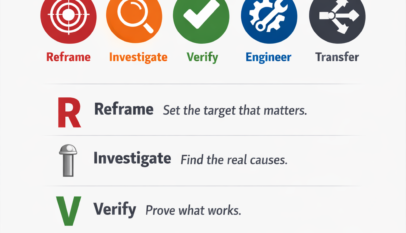Maintaining high-quality standards is essential for success in the dynamic world of manufacturing and production. Quality Department Key Performance Indicators (KPIs) are critical tools that help organizations measure and improve their processes. In this post, we’ll explore the essential KPIs for quality management and how they can be leveraged to enhance overall performance.
Understanding Quality Department KPIs
Quality Department KPIs are metrics used to evaluate the effectiveness and efficiency of various quality-related processes within an organization. These indicators provide insights into areas needing improvement and help make data-driven decisions to enhance quality standards.
Key Quality KPIs and Their Importance
- In-Process Defects
- Rejection: This KPI measures the percentage of products that do not meet quality standards and are discarded. It helps identify the areas where quality issues are prevalent.
- Rework: This indicates the effort required to correct defective products. High rework rates often point to underlying process issues.
- Customer Complaints
- Repeated Complaints: Tracking the count of complaints received more than once for the same issue helps identify persistent problems that need addressing.
- Fresh Complaints: Monitoring new complaints highlights emerging issues that may require immediate attention.
- Inspection Status
- Inspection Quantity: This measures the total number of items inspected within a given period, helping to gauge the efficiency of the inspection process.
- First Time Right: The percentage of products that pass inspection on the first attempt without requiring rework. Higher rates indicate better process control.
- Accepted Quantity: The number of products that pass inspection and are accepted for use or sale.
- Rejection Percentage: The percentage of inspected products that fail and are rejected, pointing to areas needing improvement.
- Cost of Quality
- Good Quality Cost (Prevention and Appraisal Costs): These include costs incurred to prevent defects and ensure quality, such as training, inspections, and testing.
- Poor Quality Cost (Internal and External Failure Costs): Costs related to defects, including scrap, rework, returns, repairs, and warranty claims.
- Non-Conformance
- Product Non-Conformance: Specific products that fail to meet quality standards.
- Process Non-Conformance: Issues related to specific processes or stages in production.
- Supplier Quality
- Quality Ratings: Evaluating suppliers based on the quality of their products and services can influence selection and continued use.
- OTD (On-Time Delivery)
- Inspection Time: The time taken to inspect products impacts overall delivery schedules.
- Instruments Status
- Total Number of Instruments: The total number of measurement and inspection instruments available.
- Calibration Details: Information about the calibration status of instruments ensures accuracy.
- Accuracy: The precision and reliability of the instruments used in quality control.
- Killed Defect
- Defect Phenomenon: Specific manifestations of defects that have been identified and eliminated.
- Defect Mode: The manner or type by which a defect occurs or manifests in the product or process.
- Continual Improvement
- Poka Yoke: Implementation of error-proofing techniques to prevent mistakes.
- Kaizen / SGA: Continuous improvement activities involving all employees.
- OPL (One Point Lesson) / Standardize: Short, focused training sessions to share best practices and standardize organizational processes.
Leveraging Quality KPIs for Continuous Improvement
It is important for organizations to regularly monitor key performance indicators (KPIs) to identify areas that require attention and implement corrective actions to improve their processes. Continuous improvement is a journey, and using these KPIs effectively can lead to significant enhancements in product quality and operational efficiency.
Understanding and implementing Quality Department KPIs is a critical step towards achieving excellence in manufacturing and production. Organizations can drive continuous improvement and maintain high-quality standards by focusing on these key indicators.


















